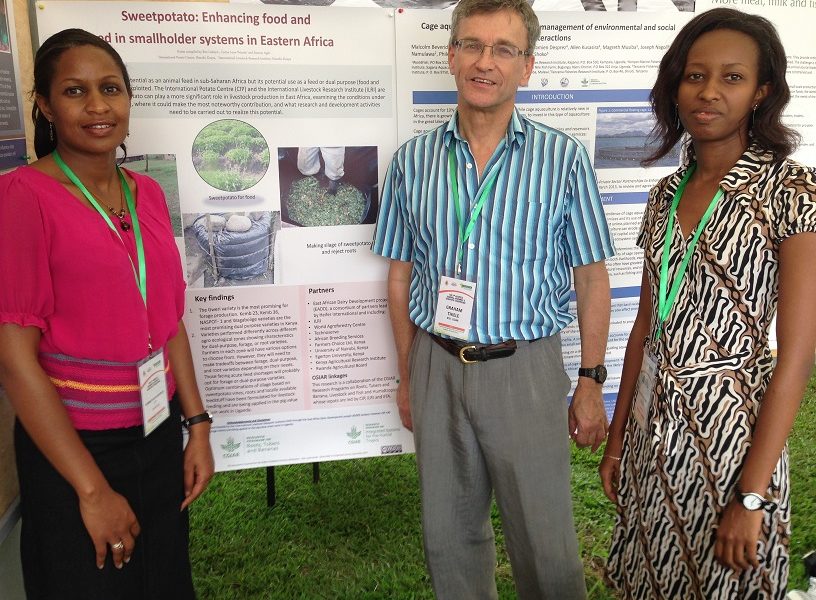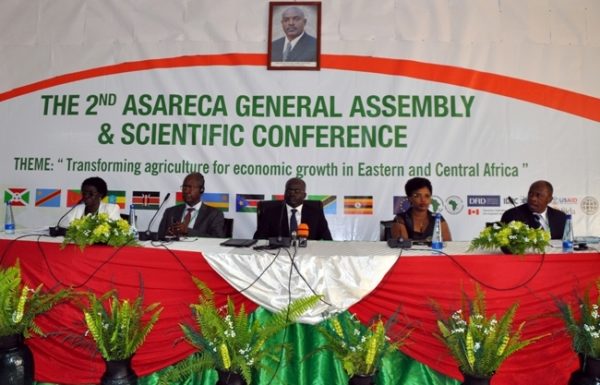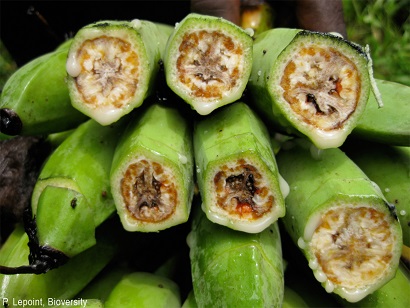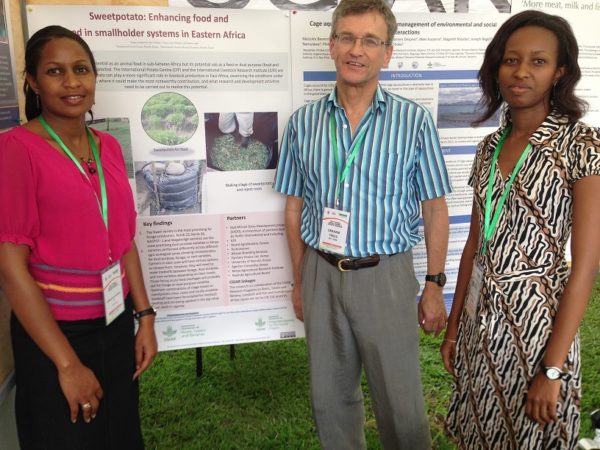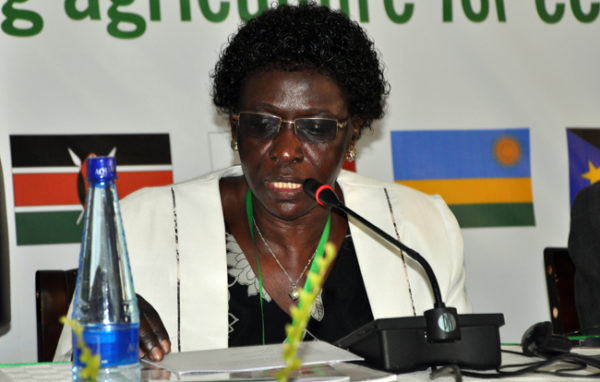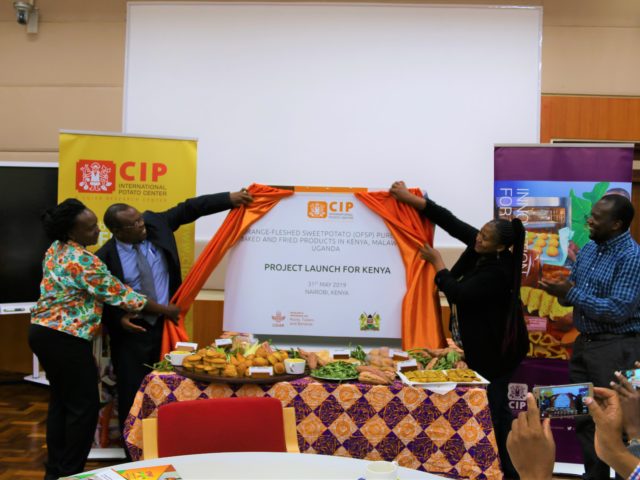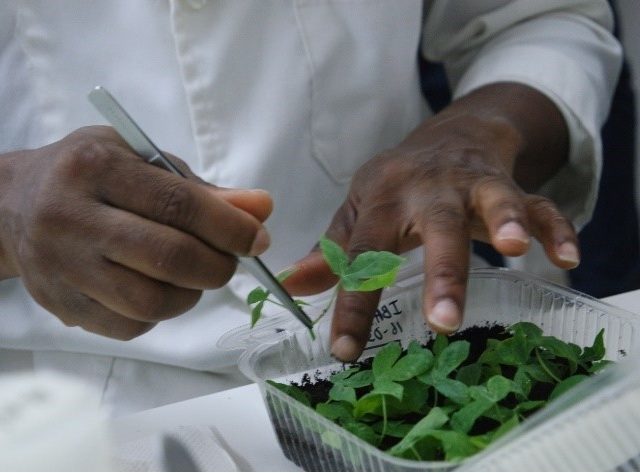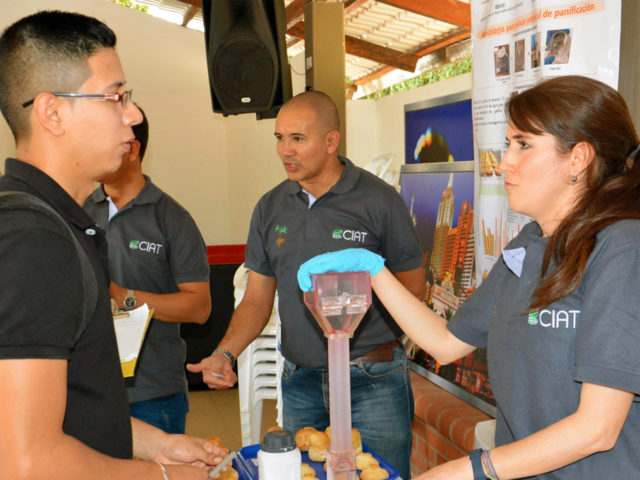By Graham Thiele, RTB Director
Attending the General Assembly and Scientific Conference of the Association for strengthening Agricultural Research in Eastern and Central Africa (ASARECA) in Bujumbura, Burundi from 9-13 December, convinced me of the need to have a clearer plan for engagement with them.
While I was motivated to take part by an invitation from Dr Fina Opio, Executive Director of ASARECA, to a side meeting of CGIAR Research Programs (CRPs), I found the whole event a great opportunity for CGIAR Centers and CRPs to learn more about and engage with a wide range of partners including policy makers (an impressive group of agriculture ministers), national agricultural research systems, farmer associations and SROs.
Research and agricultural transformation
Plenary sessions included updates from Dr Yemi Akinbamijo of FARA, Dr Harold Macauley of CORAF, Dr Adipala Ekwamu of RUFORUM and Prof.Timothy Simalenga of CCARDESA which will hold its General Assembly next year in May, in Botswana. Prof. Geoffrey Mrema made an excellent presentation on progress with the Science Agenda for Agriculture in Africa.
Prof. Agnes Mwang’ombe gave a stimulating keynote on “Research and agricultural transformation”. She pointed out that, whilst strong engagement of the private sector is essential, the public sector still has a key role in areas such as policy analysis, neglected crops and training. The new paradigm supported by the African Union/NEPAD and embedded in the CAADP process requires dynamic agricultural markets. The CGIAR reform and system level outcomes open new prospects for engagement, and partnerships are needed to pull in the 16 CRPs.
After the plenary sessions, I attended the technical sessions most relevant to RTB:
-Clet Masiga and Charles Mugoya explained how ASARECA is supporting low-cost tissue culture for bananas, cassava and potatoes, using pressure cookers instead of autoclaves, wooden hoods to maintain sterile conditions and locally available vitamins and chemical inputs. They are linking up with the private sector, including AGROBIOTEC in Burundi, to enter markets with a more competitive product.
-William Tinzaara (Bioversity International, Uganda), told us about an innovation systems approach to help combat banana xanthomonas wilt (BXW). Farmers working with participatory learning are connected via a website and organized into accountability groups who decide if planned actions are addressing knowledge gaps.
-Rodin Randriantsalama (Centre de Développement Rural et de Recherche Appliquée) explained the different control options being tested for late blight in Madagascar. Three resistant potato clones from CIP, he said, yielded 50% more than the Spunta control.
-Astere Bararyenya (ISABU – Institut des Sciences Agronomiques du Burundi) noted that in Burundi only 1% of seed was certified in 2013. They are working with an ASARECA-supported project on alternatives such as farmer-managed seed plot technique and positive selection. Bararyenya stressed the need for inclusive quality assurance, with quality declared seed by private sector and cooperatives.
-Jane Ngugi led us through the mechanisms being introduced by the Kenya Agricultural Productivity and Agri-business project in 20 counties to create a pluralistic, demand-led system. The idea is to provide guidance on farming as business and linking with markets, and to empower farmer organizations to influence extension services. 109 service provider consortiums and 36 priority enterprises have been established and farmers have been organized into CIGs.
A side meeting was organized by IDRC, a close partner of ASARECA on making agri-systems work for the poor. Similarly, Judith Francis (CTA) and Michael Waithaka (ASARECA) held a side meeting on seed science and policy which included presentations of experiences with Integrated Seed System Development in Ethiopia and Uganda: a good opportunity to link up with RTB seed system work.
Visiting stands
The East Africa Productivity Project had an extensive and well-staffed stand. Chris Omongo (NaCCRI), who coordinates the Cassava Regional Centre of Excellence in Uganda explained their work in varietal development and postharvest. They have links with IITA scientists in Tanzania.
Evelyn Katingi (ILRI) was looking after the CGIAR stand with posters and materials on some CRPs. Ben Lukuyu (ILRI) and Carlos Leon-Velarde and Sammy Agili (CIP) prepared a poster on sweetpotato for food and feed showing an emerging collaboration of Livestock & Fish, RTB and Humidtropics.
I was pleased to talk with Denis Kyetere, the Director of AATF who commented on the progress in evaluating transgenic lines with resistance to BXW with IITA researcher Lina Tripaathi. They have recently negotiated with Brazilian companies with help from CLAYUCA.
The Kilimo Trust just published a study of banana value chains in East Africa. I discussed the ethical concerns in working with banana beer – the most important processed product – with their CEO, Nuhu Hatibu. “Consumers are going to look for banana beer anyway,” he said, “and moving to a more industrialized and safer product will lead to a net welfare gain”.
On the bus I chatted with Endale Gebre, Head of Research at the Ethiopian Institute of Agricultural Research (EIAR) and current President of the African Potato Association. We discussed the widespread adoption of CIP varieties in Ethiopia which Gebre attributes primarily to their resistance to late blight. However, in Sshemene – an irrigated area – farmers plant year round and they need varieties with a short dormancy. CIP varieties are not doing so well there and bacterial wilt is also a significant problem.
Developing collaboration
The side meeting for CRPs became a working dinner chaired by Francis Wachira (ASARECA Dep. Executive Director). All ASARECA program managers took part as well as representatives of around eight Centers/CRPs. Fina Opio clarified “The CRPs are the principal point of engagement with the CGIAR,” although they will continue to work also with the DGs. Joseph Methu, the Head of Partnerships, reminded us of the collaboration mechanisms proposed during the May meeting with CRPs including: MoUs with CRPs/Centers, mutual involvement in design of projects, involving ASARECA in CRP planning and steering forums, sharing CRP working sites and EAAPP Regional Centers of Excellence, scientist training and regular six-month review meetings.
Dr. Ivan Rwomushana made a presentation on the new Operational Plan for 2014-18 with a set of thematic projects based on stakeholder priorities, a process in which CRPs have been involved. We discussed progress in collaboration but were hampered by a lack of continuity in participants from the earlier meeting and rather limited time. New points emerged around the possibility of a single MoU with the Consortium, the need to have an additional mechanism for reporting to complement the six-month review, and options for collaboration around results-based management and M&E.
In summary, the meeting was not only an excellent opportunity to network with ASARECA and its partners, it also showed me RTB needs to seek ways for a more structured engagement.
